Synology vs Terramaster NAS – Which Should You Buy?
Synology VS Terramaster NAS Drives in 2025 – Which One Deserves Your Data?
Synology and TerraMaster are two well-established brands in the network-attached storage (NAS) industry, each targeting a range of users from home enthusiasts to small and medium-sized businesses. Synology, a Taiwanese company with over two decades in the field, is widely recognized for its DSM (DiskStation Manager) software, which emphasizes stability, security, and integration within a tightly controlled ecosystem. TerraMaster, while newer to the market, has steadily gained ground by offering hardware-focused, cost-effective solutions with increasing software support via its TOS (TerraMaster Operating System) platform.
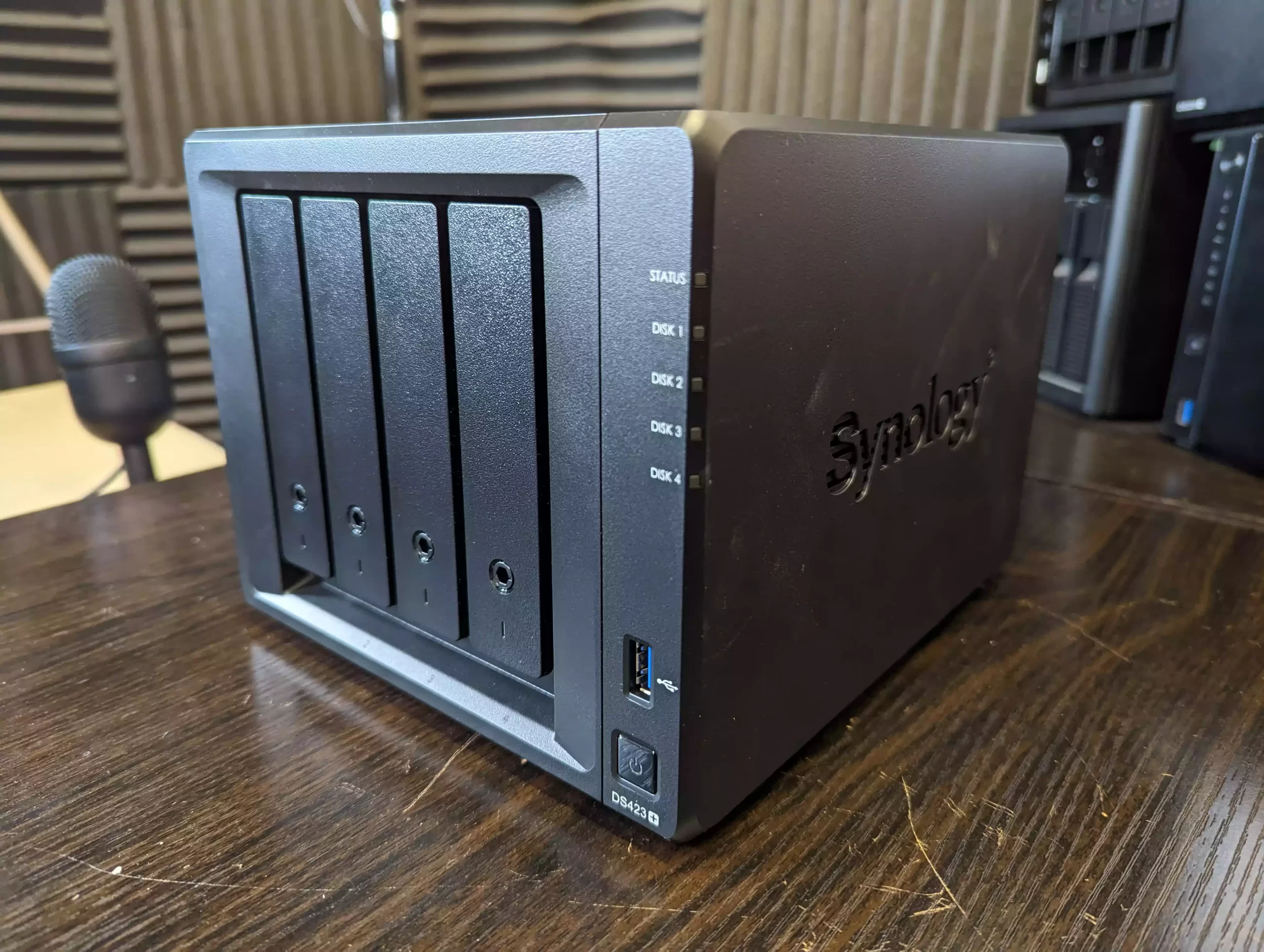 |
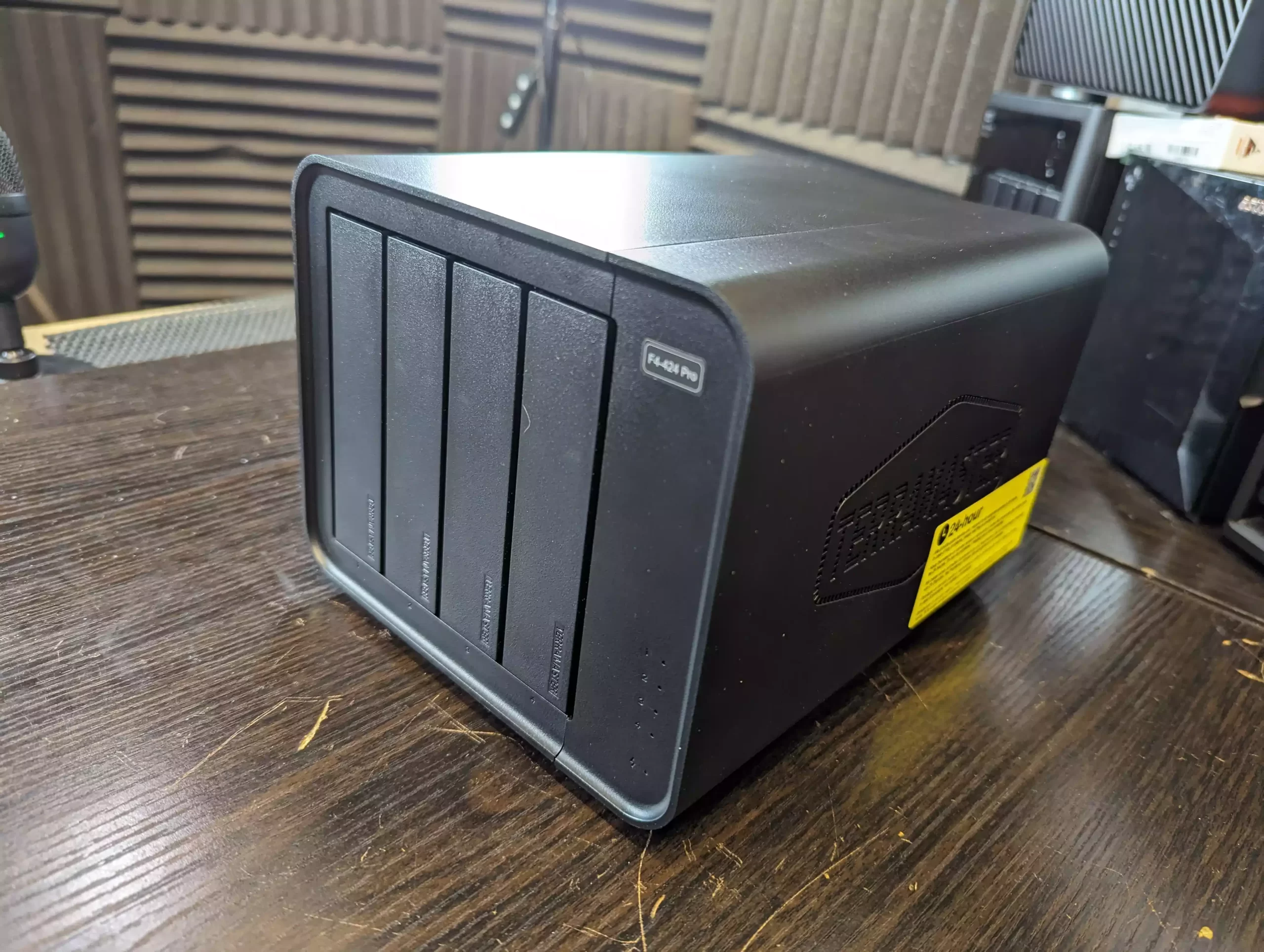 |
I want to provide a side-by-side comparison between Synology and TerraMaster as they stand in 2025, focusing on the real-world differences in hardware, storage, software, and security. The goal is to outline the practical strengths and weaknesses of each brand without leaning heavily toward subjective preferences or historical bias. This is especially relevant for users reevaluating Synology due to recent policy shifts, or for those considering TerraMaster as a flexible and affordable alternative.
| Area | Synology DSM | TerraMaster TOS |
|---|---|---|
| OS Flexibility | Locked DSM ecosystem | Allows TrueNAS/Unraid without voiding warranty |
| RAID System | SHR Hybrid RAID | TRAID Hybrid RAID |
| AI & Surveillance | DVA Series supports real-time AI detection | Surveillance App still in beta |
| Virtual Machines | VMM with full GUI | VirtualBox-based, less integrated |
| Deduplication | Btrfs-based, native to DSM | Supported with “Dedup Manager” |
| Media Streaming | No native Jellyfin, Video Station discontinued | Jellyfin included natively |
| Security | Malware, ransomware, firewall + audit | Includes Isolation Mode, detailed scanner |
| Mobile/Remote Tools | Broadest mobile app suite + QuickConnect | Core mobile app + TNAS.online DDNS |
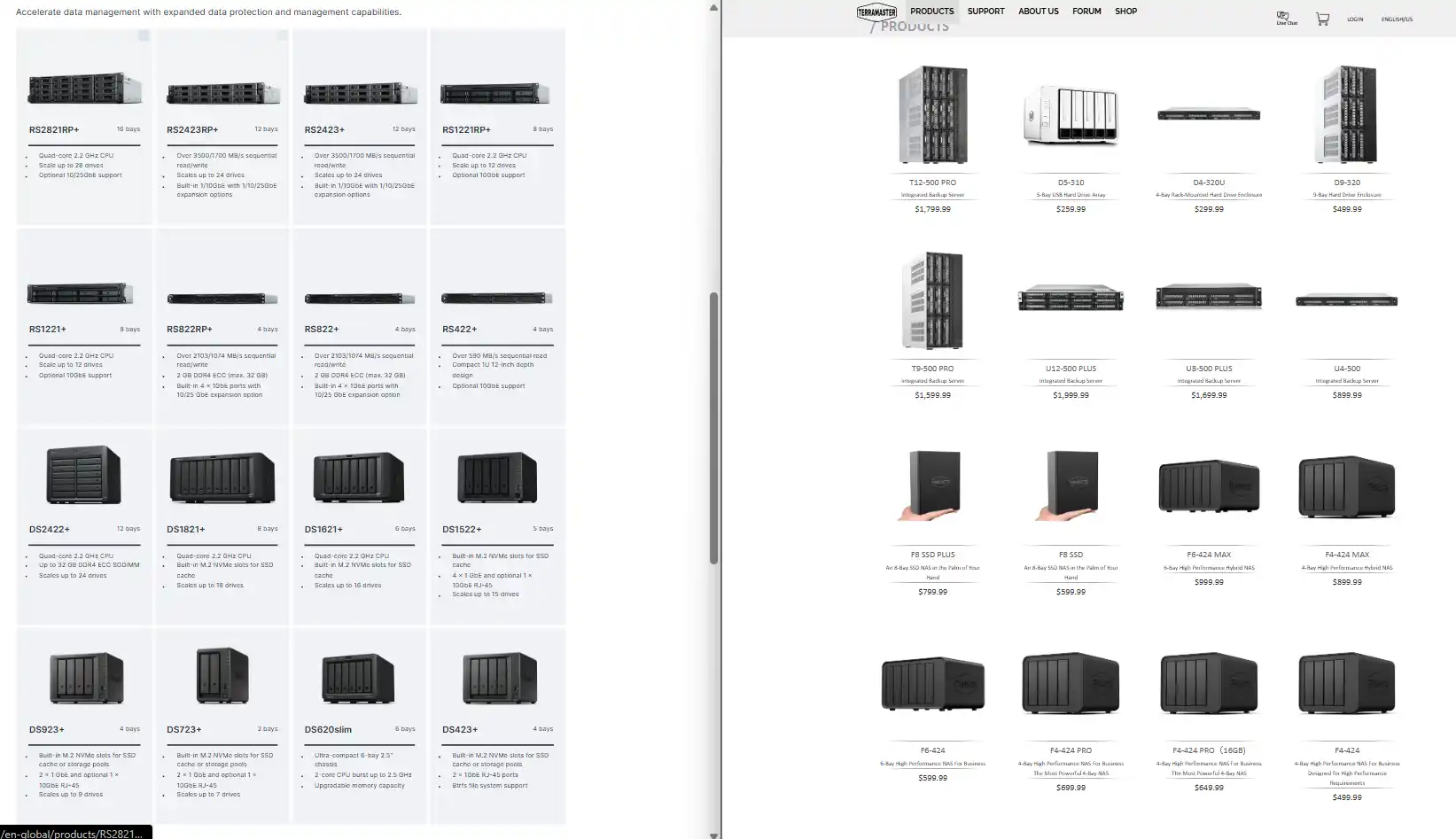
Synology vs Terramaster NAS – Hardware Solutions Compared
When evaluating Synology’s hardware catalog, the company demonstrates a clear strategy of segmenting performance tiers through tightly integrated systems. The FS (FlashStation) series targets ultra-low latency workloads with powerful multi-core CPUs and all-flash designs. For instance, the FS6400 and FS3600 offer 240,000 and 195,000+ 4K random write IOPS respectively, built for high-throughput environments. The HD series goes a different direction, pushing density with up to 300 drives in models like the HD6500, which pair with dual 10-core CPUs and provide over 6,600 MB/s throughput. Meanwhile, the SA and XS/XS+ series address scalable performance and redundancy needs, offering dual-controller setups, high RAM ceilings, and optional Fibre Channel or 25/40GbE expansion. Synology’s Plus and Value series provide consumer-grade flexibility, but these are becoming increasingly closed ecosystems with limited hardware compatibility and optional expansion cards restricted to specific interfaces or models.
| Category | Synology Example Models | TerraMaster Example Models | CPU & RAM Range | Typical Use Case |
| Entry-Level (2-4 Bay) | DS223, DS423, DS224+, DS423+ | F2-212, F4-223, F4-210 | Quad-core 1.7–2.2GHz, up to 32GB ECC | Personal cloud, backups, media streaming |
| Mid-Range (4-6 Bay) | DS1621+, DS1522+, DS1821+ | F4-424, F6-424, F4-424 Pro | Quad-core 2.2GHz, up to 32GB ECC, NVMe cache | SOHO/SMB file sharing, light virtualization |
| Performance Tier (6-8 Bay) | RS1221+, RS2423+, DS3622xs+, DS1823xs+ | U4-423, T6-423, T9-423 | Quad to Octa-core Xeon, up to 64GB+, 10GbE support | Heavy multi-user access, surveillance, VM use |
| Enterprise / Rackmount | RS4021xs+, SA6400, SA3610, UC3200 | U12-500 Plus, U16-722-2224, T12-450 | 10–12 core CPUs, 128GB+ RAM, SAS, PCIe expandability | Virtualization clusters, iSCSI SAN, backups at scale |
| All-Flash / NVMe Focused | FS2500, FS3600, FS6400, SA3400D | F8 SSD Plus, U8-522-9400, U24-722-2224 | 8–24 cores, all-SSD, 10/25/40GbE, NVMe-only storage | High IOPS databases, virtualization, low-latency workloads |
TerraMaster, in contrast, focuses its value proposition heavily on maximizing hardware capabilities per dollar. Even in their midrange, systems like the F6-424 Max or F4-424 Pro include Intel Celeron or i3 CPUs, 2.5GbE or 10GbE connectivity, NVMe SSD support, and upgradeable RAM—all within sub-$700 price ranges. Larger units like the T12-500 Pro or U24-722-2224 scale storage up to 24 bays or beyond, while still offering competitive CPUs and abundant connectivity options. TerraMaster also maintains a vast lineup of hybrid RAID-capable DAS and NAS systems, including USB 3.2 Gen 2 enclosures for fast, direct-attached storage. Unlike Synology, TerraMaster maintains open compatibility with third-party drives and offers more consistent support for M.2 NVMe storage expansion, SSD caching, and even integrated GPU support in some models.
|
|
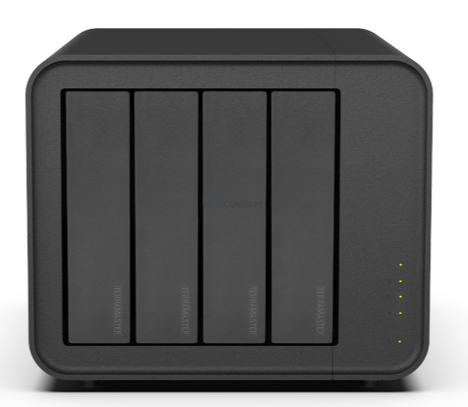
Terramaster F4-424 / Max / Pro |
||
|
Check Amazon in Your Region for the Synology NAS Solutions |
Check B&H for the Synology NAS Solutions |
Check Amazon in Your Region for the Terramaster NAS Solutions |
Check B&H for the Terramaster NAS Solutions |
Overall, while Synology’s premium hardware—especially in enterprise segments like FS, HD, and SA series—is clearly capable and built with specific high-performance use cases in mind, the general direction of the brand has shifted toward tightly controlled environments with gradual upgrades. In contrast, TerraMaster’s approach offers broader hardware scalability and modularity across more price points, with emphasis on high-speed networking and expansive storage configurations. For users who prioritize full hardware utilization, third-party component compatibility, or budget scalability, TerraMaster offers more flexibility. Meanwhile, users looking for tightly integrated, support-rich systems—especially in enterprise workloads—may lean toward Synology, albeit at a higher cost per feature.
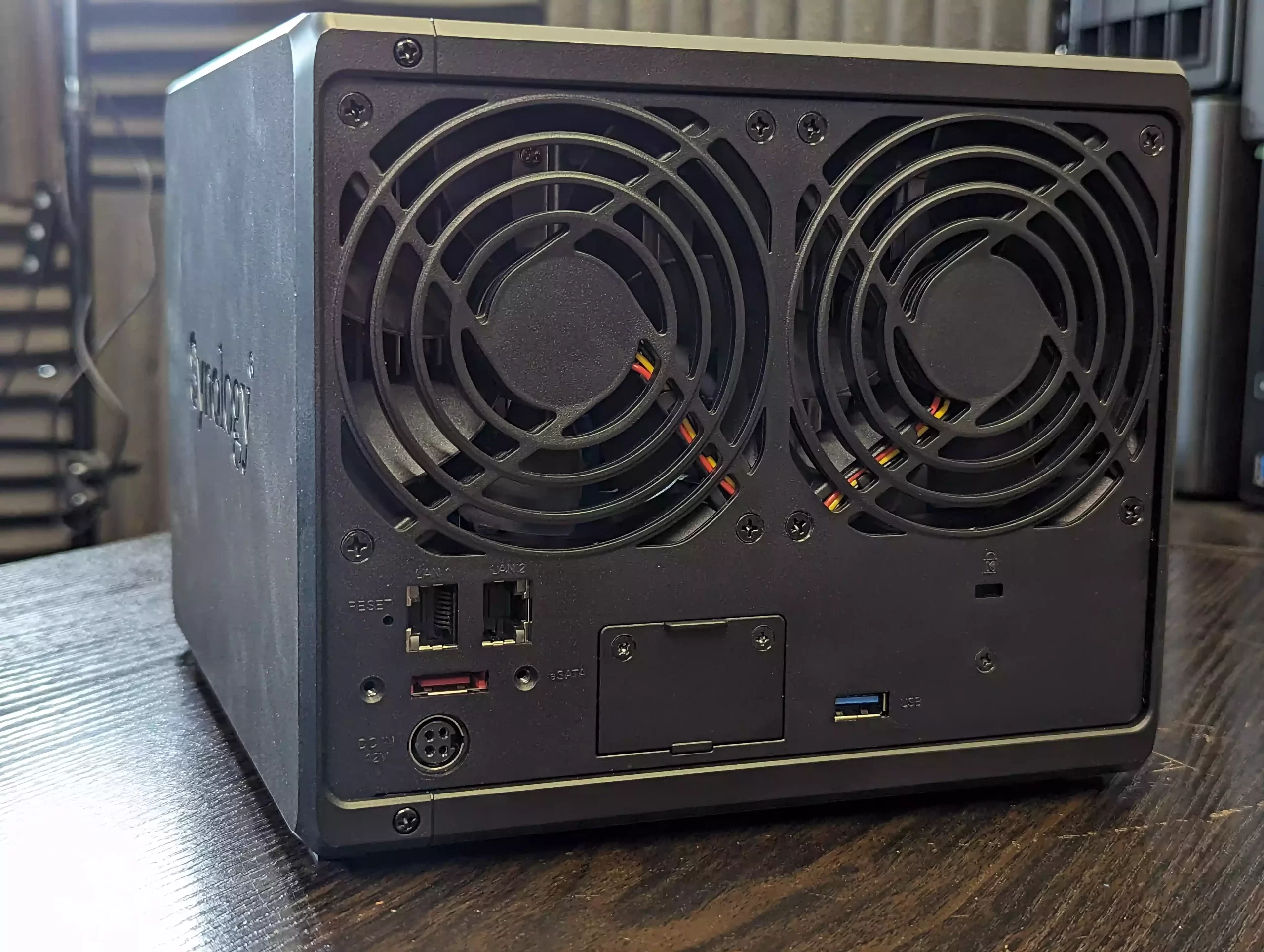 |
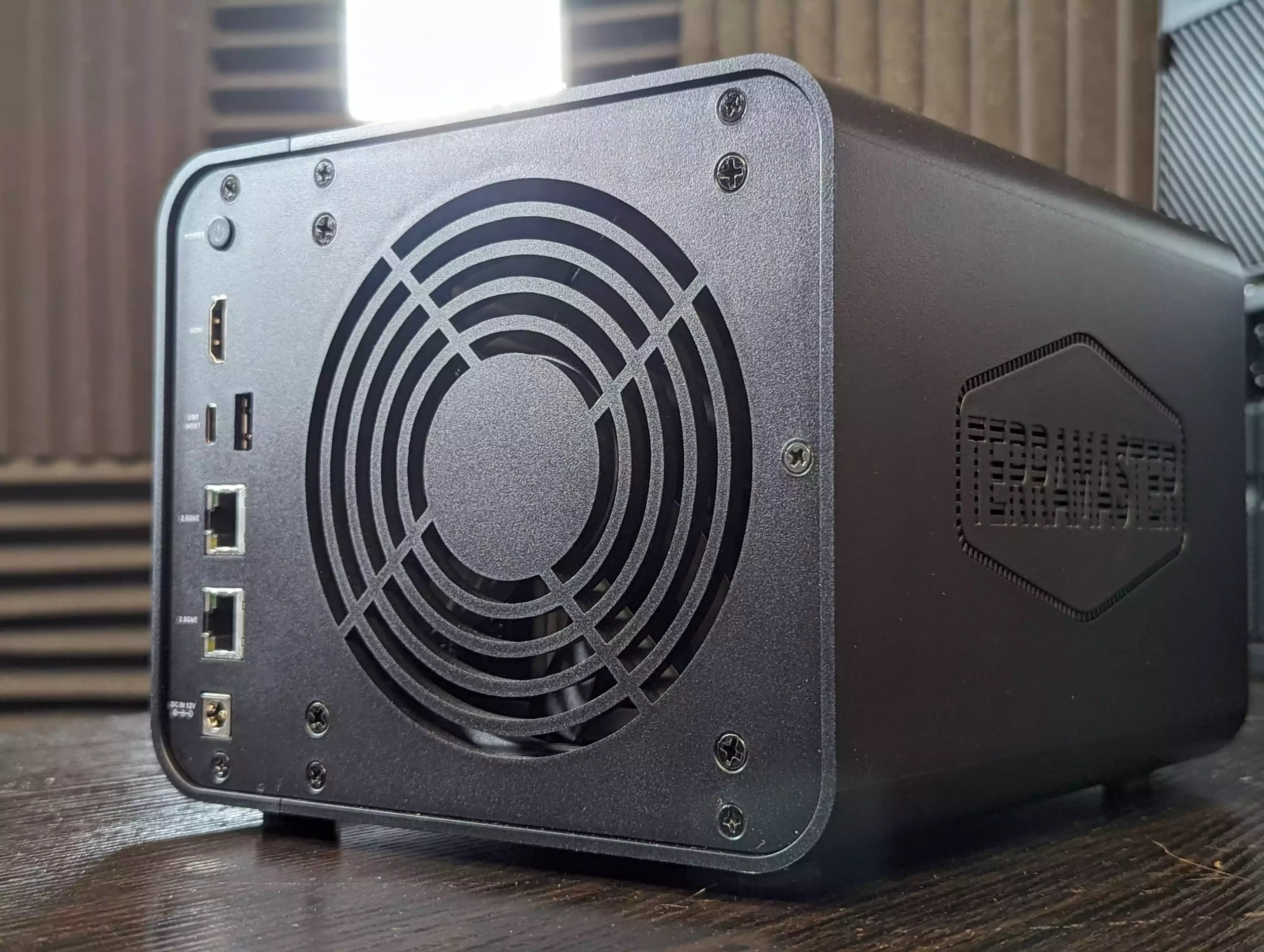 |
Synology vs Terramaster NAS – Storage, Compatibility and Scalability
Storage functionality is a critical part of any NAS system, and both Synology and TerraMaster offer a wide range of capabilities here—but with distinct philosophies. Synology employs its own hybrid RAID system known as Synology Hybrid RAID (SHR), which provides flexibility in mixing different drive sizes while still maintaining redundancy. SHR is available in both single- and dual-disk fault-tolerant configurations and is fully integrated with their Btrfs-based file system, offering advanced features like snapshots, deduplication, and WORM (Write Once, Read Many). Their enterprise-class devices also support more traditional RAID configurations (RAID 0/1/5/6/10) and incorporate proprietary features like Synology RAID F1 for flash endurance. However, Synology has increasingly restricted drive compatibility on newer models such as the DS925+, requiring only their own branded HAT or SAT series drives for initialization or full functionality—a move that limits storage choices for end users.
| Feature | Synology | TerraMaster | Notes |
|---|---|---|---|
| Drive Compatibility | Limited to Synology-branded drives on newer models (e.g. DS925+) | Open support: WD, Seagate, Toshiba, Samsung, etc. | Synology enforces verified drive policy; TerraMaster is open |
| RAID Support | RAID 0/1/5/6/10, SHR (Synology Hybrid RAID) | RAID 0/1/5/6/10, TRAID (TerraMaster RAID) | Both offer flexible hybrid RAID options |
| File Systems | Btrfs and EXT4 (model-dependent) | Btrfs and EXT4 (model-dependent) | Parity here; both support snapshotting on Btrfs |
| Snapshots | Supported on all Btrfs-enabled models, with versioning & scheduling | Supported on Btrfs-enabled models; varies by model | Synology has more mature snapshot UI |
| Deduplication | Btrfs-native deduplication on select models | GUI-based “Dedup Manager” app available | Both platforms now offer this |
| WORM (Write Once Read Many) | Supported on all recent DSM models | Available on compatible TOS models | Important for compliance environments |
| SSD Caching | Available via M.2 or 2.5” SSD (read/write) | Available via M.2 or 2.5” SSD (read/write) | Hardware support needed on both |
| Storage Pool Creation via M.2 SSDs | DSM 7.2+ allows with Synology-branded SSDs only | TOS 5.x+ allows with most 3rd-party M.2 SSDs | TerraMaster has more flexibility here |
| Expansion Units | Proprietary only (e.g. DX517, DX525 via eSATA/USB-C) | Wider variety including hybrid M.2/HDD enclosures | Synology expansion limited to official units |
| Third-Party Expansion Enclosures | Not supported or blocked in DSM | Fully supported via USB or DAS | TerraMaster supports open expansion ecosystem |
| Max Capacity (Consumer Units) | Up to 180–300TB on XS+/SA series (w/ expansions) | Up to 264TB+ on Pro/Enterprise systems | Similar potential; depends on model |
| Storage Protocols | iSCSI, SMB Multichannel, NFS, AFP, WebDAV | iSCSI, SMB Multichannel, NFS, AFP, WebDAV | Parity on protocols |
| Storage Analytics / Monitoring | Detailed UI with health, lifespan & usage stats | Less polished UI, but includes drive info & warnings | Synology more user-friendly; TerraMaster more technical |
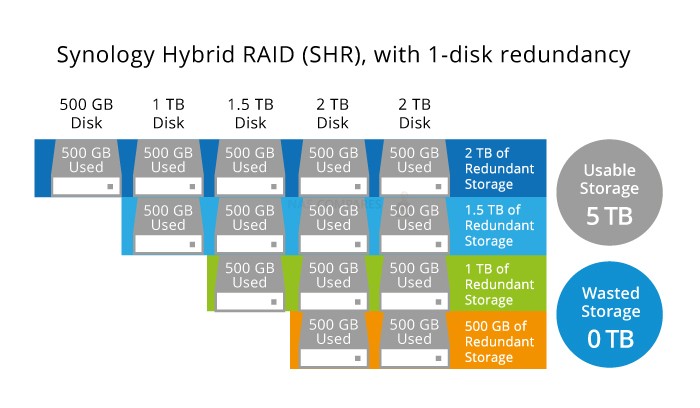
TerraMaster offers a more open storage environment, supporting standard RAID types (RAID 0/1/5/6/10) and introducing its own hybrid RAID option, TRAID, designed to dynamically balance storage allocation when using mismatched drives. Like Synology, TerraMaster has implemented Btrfs in its newer systems and supports snapshots, volume encryption, and deduplication (via its Dedup Manager) across many models. However, unlike Synology, TerraMaster places no restrictions on drive brands or third-party SSDs—users are free to populate their systems with Seagate, Western Digital, Toshiba, Kingston, or Samsung drives without concern for compatibility blocks. This openness extends to M.2 NVMe support, where TerraMaster allows NVMe drives to be used not only for cache but also for primary storage pools, something Synology currently reserves for specific enterprise-class devices or limits to caching only in most consumer models.
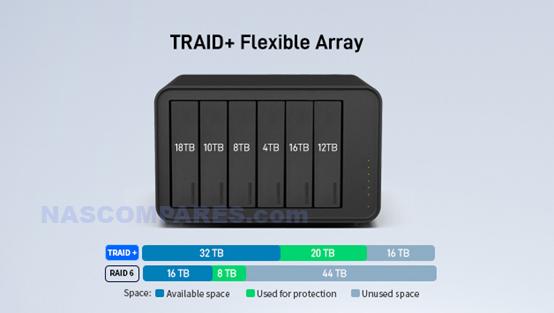
Where Synology shines is in the management and monitoring of storage. DSM’s Storage Manager provides a clean, user-friendly interface with visualized health metrics, smart monitoring, and snapshot replication tools. Advanced features such as scheduled integrity checks, automatic repair routines, and near-seamless volume expansion contribute to its appeal in professional environments. TerraMaster’s storage UI is functional but somewhat less polished; it provides access to core tools like volume creation, SMART diagnostics, and snapshot management, but lacks some of the refined monitoring granularity found in DSM. Still, for users who prioritize freedom of storage deployment, drive variety, and full hardware utilization, TerraMaster’s openness may outweigh DSM’s slightly more mature GUI design. Ultimately, the storage advantage between the two depends on whether the user values tight software integration or broader hardware flexibility.
Synology DSM vs Terramaster TOS NAS – Software Comparison
Synology’s DSM (DiskStation Manager) remains one of the most mature NAS operating systems available today, known for its polished interface, smooth navigation, and deep integration across features. DSM offers a fully modular, desktop-like GUI accessible through a browser, with a broad suite of first-party applications such as Synology Drive for file synchronization, Hyper Backup for multi-destination backups, and Active Backup for Business, a highly regarded solution for PC, server, and VM backups.
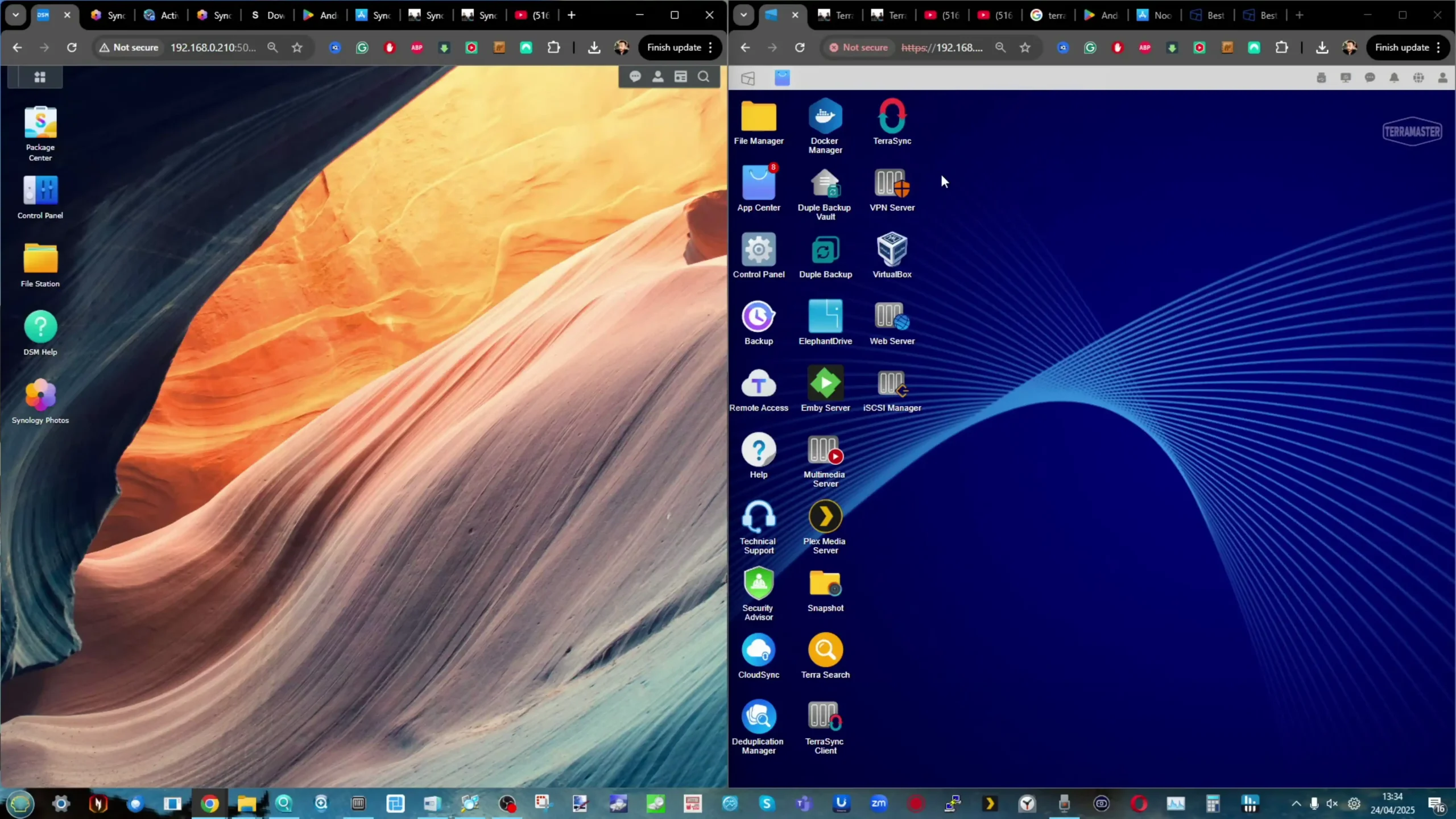
These tools often match or exceed the capabilities of dedicated commercial backup solutions. DSM also includes native virtualization (Virtual Machine Manager), Docker container support, surveillance management (Surveillance Station), and numerous file-sharing services including WebDAV, FTP, iSCSI, and SMB multi-channel. Overall, DSM’s ecosystem is not just well-developed—it is increasingly self-contained, with Synology focusing on reducing third-party dependencies by developing in-house alternatives for productivity, security, and media apps.
| Category | Feature | Synology DSM (7.2) | TerraMaster TOS (5.1 / optional 6.x) | Notes |
|---|---|---|---|---|
| Core OS | OS Version | DSM 7.2 | TOS 5.1 standard, TOS 6 optional on newer models | TOS 6 has refreshed UI and app changes |
| Alternate OS Install |  Not supported Not supported |
 Allows Unraid, TrueNAS without voiding warranty Allows Unraid, TrueNAS without voiding warranty |
Huge flexibility advantage for TerraMaster | |
| Web Interface |  Polished, modern DSM interface Polished, modern DSM interface |
 Modern but simpler UI Modern but simpler UI |
DSM is more mature | |
| Mobile Apps |  Many DS apps across mobile platforms Many DS apps across mobile platforms |
 TNAS Mobile, limited scope TNAS Mobile, limited scope |
Synology has broader mobile toolset | |
| File Services | SMB/NFS/AFP/WebDAV |  Full support Full support |
 Full support Full support |
Core services present on both |
| iSCSI Support |  Native GUI-based iSCSI manager Native GUI-based iSCSI manager |
 iSCSI support available iSCSI support available |
Parity here | |
| RAID & Storage | RAID Options |  RAID 0/1/5/6/10 + SHR (Hybrid RAID) RAID 0/1/5/6/10 + SHR (Hybrid RAID) |
 RAID 0/1/5/6/10 + TRAID (TerraMaster Hybrid RAID) RAID 0/1/5/6/10 + TRAID (TerraMaster Hybrid RAID) |
Both support flexible hybrid RAID |
| Snapshots |  Btrfs with scheduling/versioning Btrfs with scheduling/versioning |
 On Btrfs-capable models On Btrfs-capable models |
Model-dependent on TOS | |
| Deduplication |  Btrfs-based dedup Btrfs-based dedup |
 With Dedup Manager With Dedup Manager |
Available on both with GUI | |
| Encryption |  Volume/folder/drive encryption + WORM Volume/folder/drive encryption + WORM |
 Volume encryption + WORM Volume encryption + WORM |
TerraMaster supports WORM as well | |
| SSD Caching |  Read/write SSD caching Read/write SSD caching |
 SSD caching supported SSD caching supported |
Hardware-dependent for both | |
| Virtualization & Containers | Virtual Machines |  Synology VMM (Virtual Machine Manager) Synology VMM (Virtual Machine Manager) |
 VirtualBox-based VM manager VirtualBox-based VM manager |
Less integrated in TOS but available |
| Docker Support |  Full Docker with GUI Full Docker with GUI |
 Available via App Center Available via App Center |
Equal in function | |
| GPU Passthrough |  Not supported Not supported |
 Not supported Not supported |
Absent on both platforms | |
| AI & Surveillance | AI Features |  Facial/object detection via DVA models Facial/object detection via DVA models |
 Facial/object detection Facial/object detection |
DSM AI Services in NVR/CCTV xclusive to DVA NAS models or their own cameras |
| Surveillance Suite |  Surveillance Station with licensing Surveillance Station with licensing |
 Surveillance App (Beta) Surveillance App (Beta) |
TOS app is newer and evolving | |
| Media & Streaming | Plex Media Server |  Native app Native app |
 Native support Native support |
No difference |
| Jellyfin |  Docker/homebrew Docker/homebrew |
 Native Jellyfin app Native Jellyfin app |
Edge to TerraMaster | |
| Video Player App |  Video Station EOL Video Station EOL |
 No official native player No official native player |
Use Plex/Jellyfin on both | |
| Backup & Sync | Backup Solutions |  Hyper Backup, Active Backup, USB/Cloud Hyper Backup, Active Backup, USB/Cloud |
 TerraSync (Synology Drive-like), Rsync, USB, Cloud Backup TerraSync (Synology Drive-like), Rsync, USB, Cloud Backup |
TOS has clear parity now |
| Cloud Sync |  Native Cloud Sync app Native Cloud Sync app |
 CloudSync app CloudSync app |
Supported on both | |
| Remote Access | DDNS + Tunnel |  QuickConnect QuickConnect |
 TNAS.online TNAS.online |
Both offer simplified remote access |
| Security & Access | Security Scanner |  Malware, ransomware, audit, firewall tools Malware, ransomware, audit, firewall tools |
 Full scanner + Isolation Mode Full scanner + Isolation Mode |
Both systems offer advanced security |
| VPN Server |  OpenVPN, L2TP, PPTP via GUI OpenVPN, L2TP, PPTP via GUI |
 OpenVPN/L2TP support OpenVPN/L2TP support |
GUI VPN tools available | |
| SSL Certificates |  Let’s Encrypt + custom certs Let’s Encrypt + custom certs |
 Let’s Encrypt + certs Let’s Encrypt + certs |
Equal support | |
| 2FA Support |  TOTP, authenticator app, email TOTP, authenticator app, email |
 TOTP 2FA TOTP 2FA |
Parity on login security | |
| App Ecosystem | App Center |  Extensive native apps and 3rd party Extensive native apps and 3rd party |
 App Center with essential tools App Center with essential tools |
Synology has a larger catalog |
| Package Manager |  synopkg CLI + GUI synopkg CLI + GUI |
 App Center (GUI only) App Center (GUI only) |
CLI package management is a Synology edge |
TerraMaster’s TOS (TerraMaster Operating System), currently in version 5.1 with version 6 available on select systems, has seen rapid growth in capabilities and usability over the last few years. While it doesn’t yet match DSM’s polish, it has made significant strides in offering equivalent functionality. TOS supports Btrfs-based snapshots, Rsync and CloudSync for cloud backup, Docker container deployment, and VirtualBox-based virtualization. While the latter is less tightly integrated than Synology’s VMM, it does allow for third-party VM deployment in a usable way.

TerraMaster has also developed TerraSync, a synchronization tool designed to rival Synology Drive, and supports both media management and AI-enhanced photo sorting with apps like Terra Photos. However, many of TOS’s functions rely more heavily on community-driven or open-source third-party applications, resulting in a slightly less unified experience overall.
In terms of application ecosystems, Synology’s App Center clearly offers the broader and deeper catalog, particularly for business users. First-party applications such as Synology Office, Chat, MailPlus, and Note Station deliver a productivity-focused alternative to cloud services, and their Surveillance Station software stands out as one of the most powerful NVR platforms in the NAS market.

TerraMaster’s App Center includes essential tools but lacks the same level of first-party development. However, it makes up for this in openness: TerraMaster supports a wide array of third-party and open-source platforms more freely, including Jellyfin and Unraid. Moreover, TerraMaster allows alternative operating systems like TrueNAS to be installed without voiding the warranty, which adds considerable flexibility for tech-savvy users. Overall, Synology delivers a more unified and polished software experience, while TerraMaster emphasizes adaptability, freedom, and cost

Synology vs Terramaster NAS – Security and Safety
Synology has long maintained a strong reputation in the NAS sector for prioritizing system security, and this is evident in how thoroughly security is integrated throughout DSM. Synology’s Security Advisor provides active scanning for vulnerabilities, misconfigurations, and password weaknesses, while its firewall, account protection, and IP auto-blocking features offer practical layers of defense against unauthorized access. Synology also supports comprehensive SSL certificate management via Let’s Encrypt and offers two-factor authentication (2FA) with TOTP and hardware key support. From a business continuity perspective, DSM includes native WORM (Write Once Read Many) capabilities and encrypted shared folders to protect sensitive data from tampering or deletion. Perhaps most critically, Synology operates a dedicated PSIRT (Product Security Incident Response Team), frequently publishes security advisories, and participates in high-profile vulnerability testing events like Pwn2Own—demonstrating a serious commitment to vulnerability discovery and remediation.
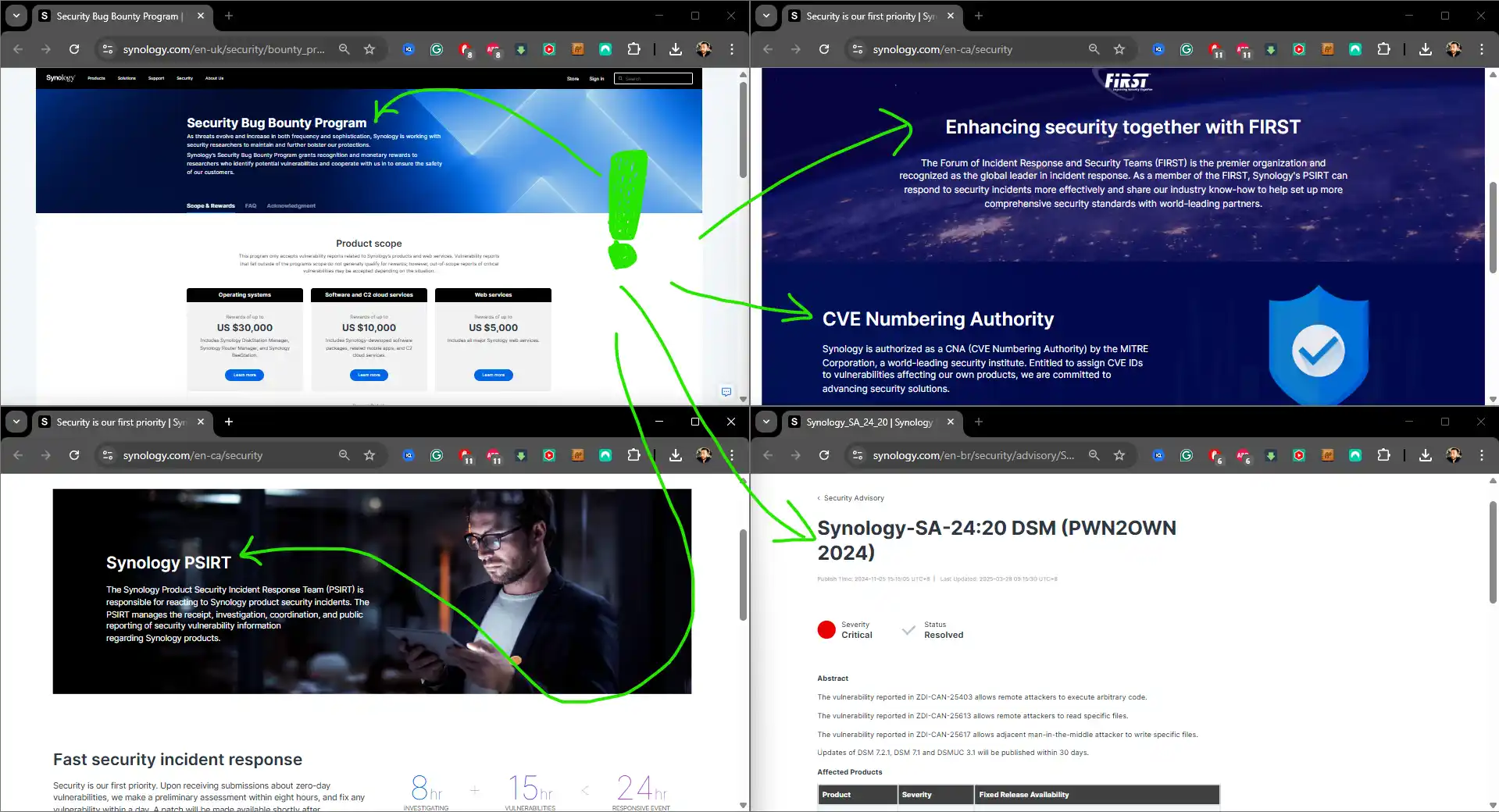
TerraMaster’s security offering has become more robust over recent years, particularly with the development of Isolation Mode—a unique feature allowing users to instantly sever all external access and remote services with a single click. This acts as a kill switch in the event of a suspected breach or malware event. TOS also includes a system-level security scanner that checks for basic vulnerabilities and enables 2FA, SSH restrictions, and SSL certificate deployment. While TerraMaster’s platform does not offer as many granular policy tools as DSM, it supports core protocols like OpenVPN and L2TP for secure remote access and regularly issues firmware updates in response to new threats. The company also now provides greater transparency regarding CVEs (Common Vulnerabilities and Exposures), though its advisory frequency and scope remain smaller than Synology’s.
| Security Feature | Synology DSM | TerraMaster TOS | Notes |
|---|---|---|---|
| System Hardening | Proactive hardening (limited root access, secure defaults) | Moderately hardened; more configurable access | Synology limits risky configurations by design |
| Security Scanner | Built-in DSM Security Advisor with customizable scan depth | TOS Security Center (less detailed on TOS 5.x) | Synology provides more actionable alerts |
| 2FA Support | TOTP-based (authenticator apps, email) | TOTP-based | Parity on two-factor authentication |
| SSL Certificate Support | Native Let’s Encrypt + custom certs via GUI | Let’s Encrypt + custom certs via GUI | Equal support, easy HTTPS setup |
| Firewall Management | GUI-based port/IP firewall with profiles | Firewall settings available (less granular) | Synology allows more granular firewall policy creation |
| Isolation Mode / Kill Switch |  Not available Not available |
 Isolation Mode disables all external access with one click Isolation Mode disables all external access with one click |
Advantage: TerraMaster for emergency lockdowns |
| Vulnerability Response (PSIRT) | Dedicated PSIRT, public advisories updated monthly | Less frequent disclosure, fewer details published | Synology actively discloses and patches |
| Security Bug Bounty Program |  Yes – active white-hat reward program Yes – active white-hat reward program |
 No public bounty program known No public bounty program known |
Synology engages with global researchers |
| Third-Party App Restrictions | Limited for security; sandboxed services | More open but requires user discretion | Synology prioritizes closed ecosystem safety |
| Remote Access Protection | QuickConnect includes traffic relay + DDNS + 2FA | TNAS.online DDNS with isolation toggle | Both offer encrypted remote access, but Synology uses multiple layers |
| Malware Detection | Real-time malware scanner, browser warnings | Included scanner, but simpler in scope | DSM scanner is more active and integrated |
| Backup Verification | Integrity verification in Active Backup | TerraSync + cloud/USB support (manual checks) | DSM offers automated backup health reports |
| Surveillance Hardening | Encrypted video storage + HTTPS + IP blocklist | Surveillance App with HTTPS, still evolving | Synology Surveillance Station is more mature and secure |
| Ransomware History | 2014 “SynoLocker” (quickly patched) | 2021–22 “Deadbolt” attacks (multiple waves) | TerraMaster more affected in recent years |
| Update Frequency | Frequent monthly patches | Less frequent, varies by model | DSM has a consistent schedule and transparency |
Despite these advancements, TerraMaster’s security record has faced scrutiny in the past due to incidents like the Deadbolt ransomware attacks. These incidents, which also affected other NAS vendors, prompted significant user backlash and a push for more proactive security updates and faster patching. TerraMaster has since responded by improving software integrity and introducing layered protection features, but the lingering perception remains that Synology maintains a stronger and more proactive security posture overall.

This perception is reinforced by Synology’s investment in ongoing vulnerability research, bug bounty programs, and a broader portfolio of security-focused tools. As it stands in 2025, Synology continues to lead in NAS security maturity, while TerraMaster has made meaningful progress—especially with unique features like Isolation Mode—but still has ground to cover in enterprise-level protections and threat response.
Synology vs Terramaster NAS – Conclusion and Verdict
Comparing Synology and TerraMaster in 2025 ultimately highlights a clear philosophical divide between the two NAS brands. Synology continues to build upon a long-standing focus on refined software, tight integration, and enterprise-grade security. Its DSM platform remains one of the most polished and feature-rich operating systems in the NAS space, offering a wide selection of first-party tools for backup, surveillance, virtualization, and secure access. However, this ecosystem is increasingly closed, with stricter hardware compatibility requirements and limited support for third-party drives, SSDs, and expansions. For users who prioritize reliability, ease of use, and support from a mature software ecosystem, Synology remains a compelling—if sometimes restrictive—option.
Synology NAS– 5 Strengths vs TerraMaster in 2025
Cons:
|
TerraMaster, by contrast, leans into flexibility and hardware value. Its broad portfolio includes NAS units ranging from entry-level to high-performance multi-bay SSD systems, often at lower price points than Synology’s equivalents. TOS 5.1 and the newer TOS 6 have brought meaningful improvements in UI and functionality, while still maintaining a more open approach to compatibility and user customization. Features like native Jellyfin support, VirtualBox VM deployment, and the ability to install TrueNAS or Unraid without voiding warranty make TerraMaster a standout for DIY-leaning users or those with niche requirements. However, its software, while improving, does not yet match the polish or depth of Synology DSM, especially in areas like virtualization, surveillance, and enterprise security.
TerraMaster NAS – 5 Strengths vs Synology in 2025
Cons:
|
In the end, choosing between Synology and TerraMaster depends heavily on user needs and expectations. Synology suits users who want a highly stable, all-in-one solution with minimal configuration and long-term support. TerraMaster offers greater adaptability and value for power users who are comfortable managing third-party apps and want to stretch their hardware investment further. Neither approach is inherently better—each has its strengths and trade-offs. Buyers seeking a tightly controlled, secure environment may gravitate toward Synology, while those who value hardware scalability, open software choices, and affordability may find more freedom with TerraMaster.
|
|
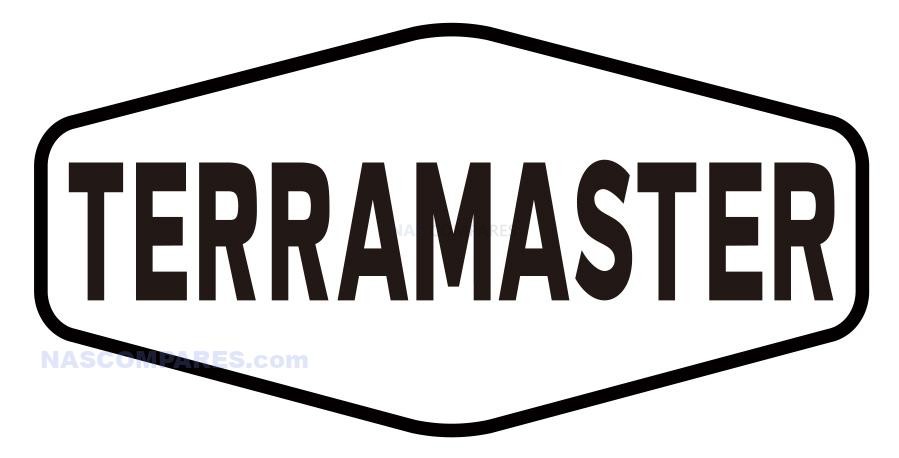
Terramaster F4-424 / Max / Pro |
||
|
Check Amazon in Your Region for the Synology NAS Solutions |
Check B&H for the Synology NAS Solutions |
Check Amazon in Your Region for the Terramaster NAS Solutions |
Check B&H for the Terramaster NAS Solutions |
 SUBSCRIBE TO OUR NEWSLETTER
SUBSCRIBE TO OUR NEWSLETTER 
[contact-form-7]
 Join Inner Circle
Join Inner Circle Get an alert every time something gets added to this specific article!
 Subscribe
Subscribe
This description contains links to Amazon. These links will take you to some of the products mentioned in today's content. As an Amazon Associate, I earn from qualifying purchases. Visit the NASCompares Deal Finder to find the best place to buy this device in your region, based on Service, Support and Reputation - Just Search for your NAS Drive in the Box Below
Need Advice on Data Storage from an Expert?
Finally, for free advice about your setup, just leave a message in the comments below here at NASCompares.com and we will get back to you. Need Help?
Where possible (and where appropriate) please provide as much information about your requirements, as then I can arrange the best answer and solution to your needs. Do not worry about your e-mail address being required, it will NOT be used in a mailing list and will NOT be used in any way other than to respond to your enquiry.
[contact-form-7]
Need Help?
Where possible (and where appropriate) please provide as much information about your requirements, as then I can arrange the best answer and solution to your needs. Do not worry about your e-mail address being required, it will NOT be used in a mailing list and will NOT be used in any way other than to respond to your enquiry.
[contact-form-7]
 Ko-fi or old school Paypal. Thanks!To find out more about how to support this advice service check HEREIf you need to fix or configure a NAS, check Fiver
Have you thought about helping others with your knowledge? Find Instructions Here
Ko-fi or old school Paypal. Thanks!To find out more about how to support this advice service check HEREIf you need to fix or configure a NAS, check Fiver
Have you thought about helping others with your knowledge? Find Instructions Here

|
 |
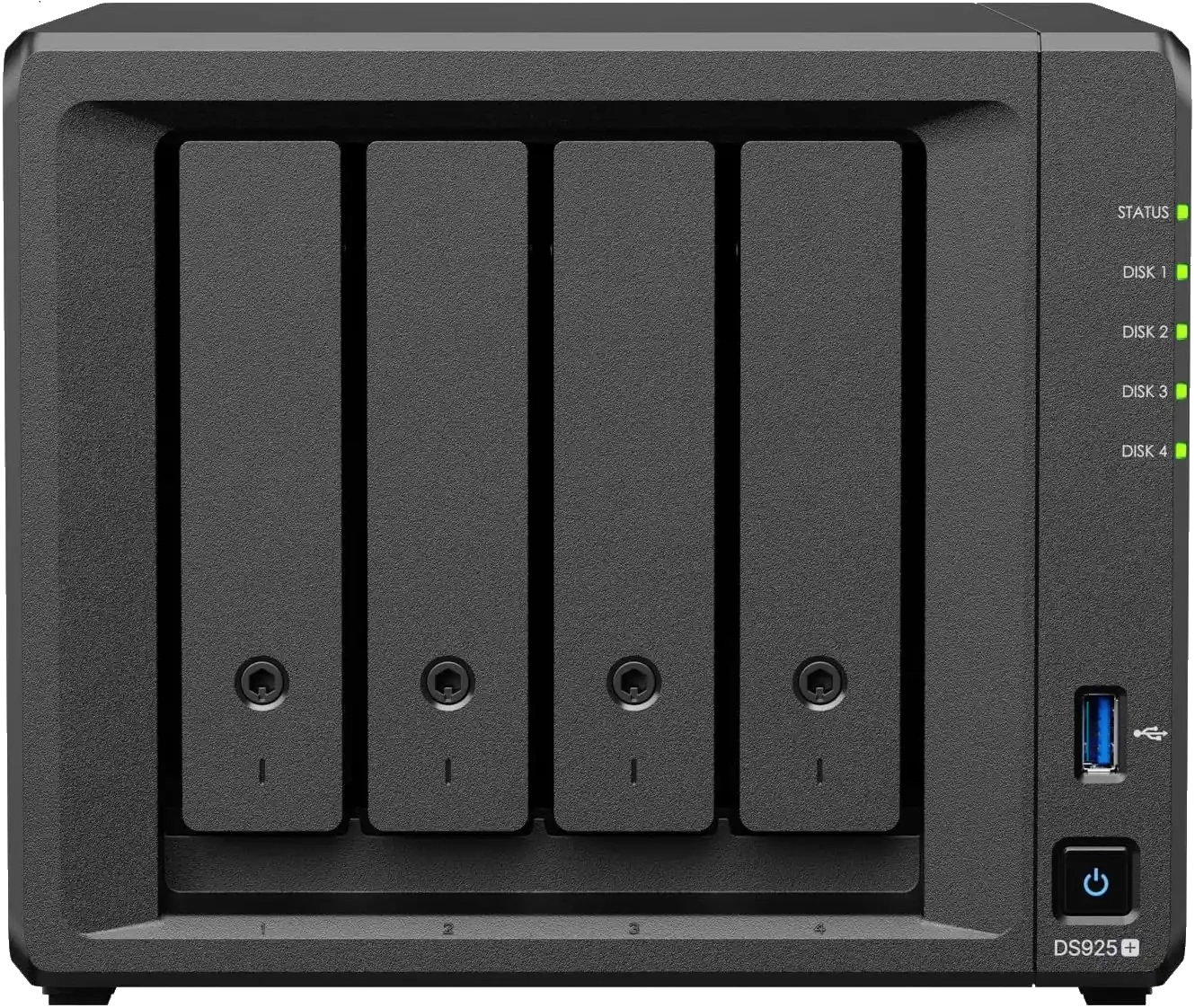






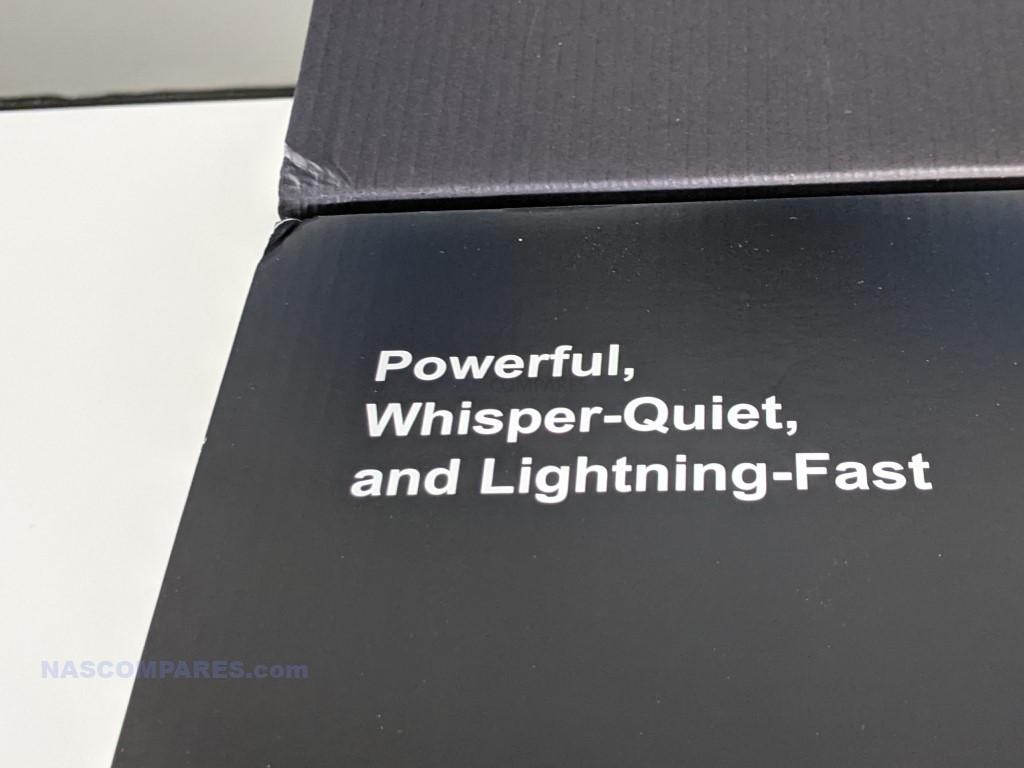
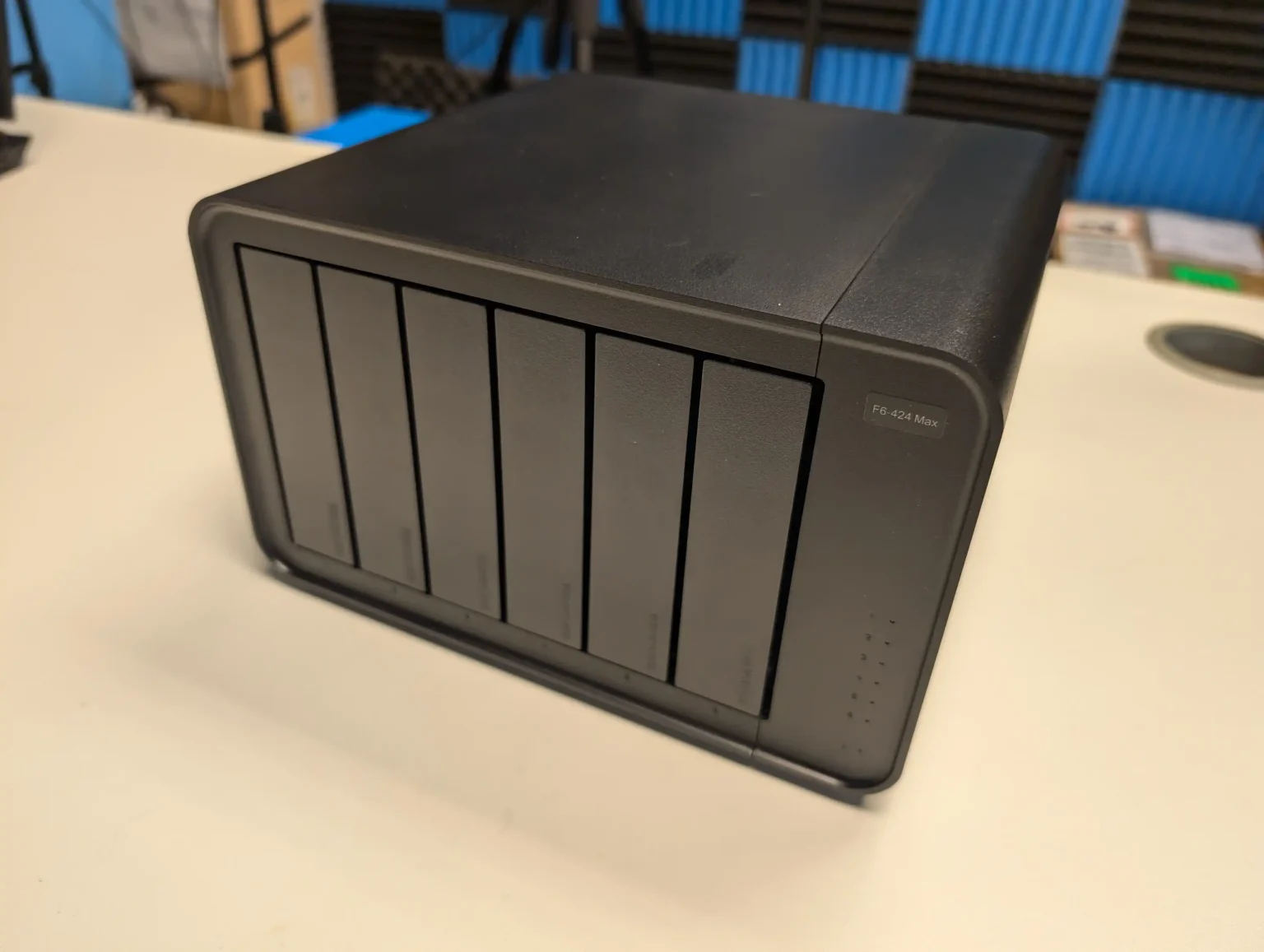

 Powerful Hardware: Intel i5-1235U with 10 cores and 12 threads for resource-heavy tasks.
Powerful Hardware: Intel i5-1235U with 10 cores and 12 threads for resource-heavy tasks. Higher Price Tag: At just under $1K, it’s more expensive than TerraMaster’s other models, which may deter budget-conscious buyers.
Higher Price Tag: At just under $1K, it’s more expensive than TerraMaster’s other models, which may deter budget-conscious buyers.






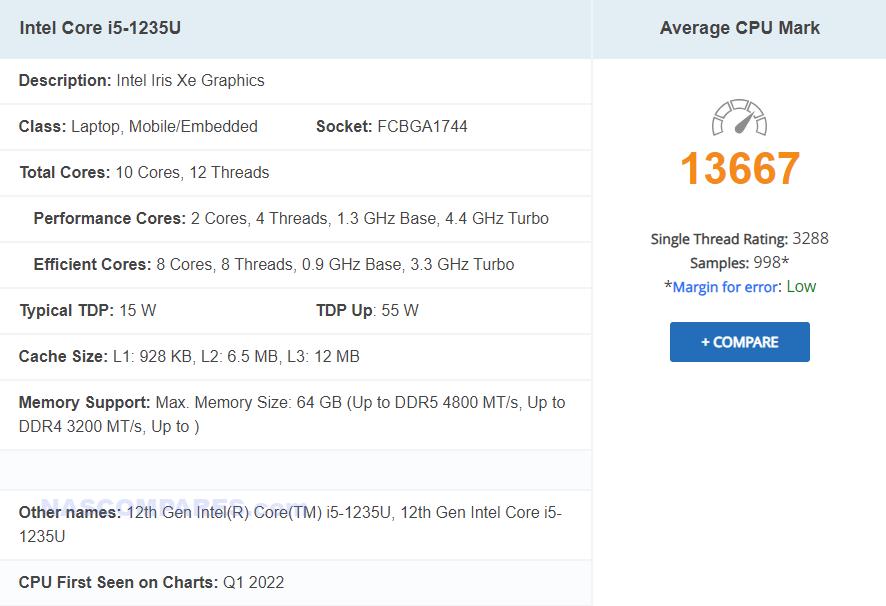
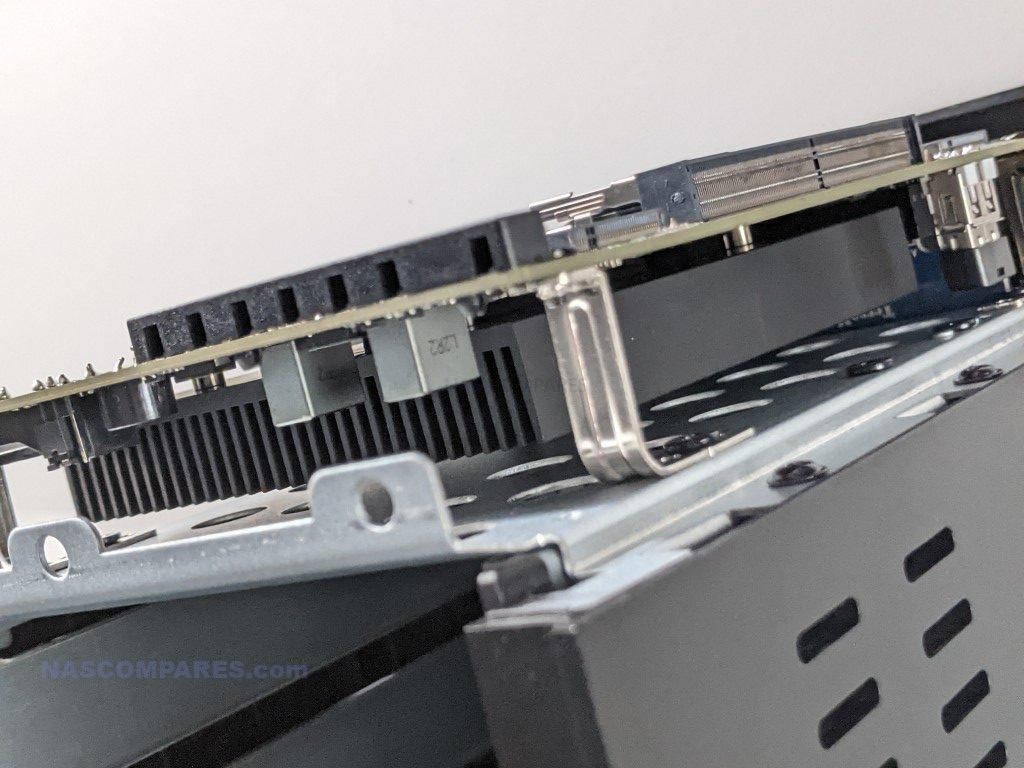
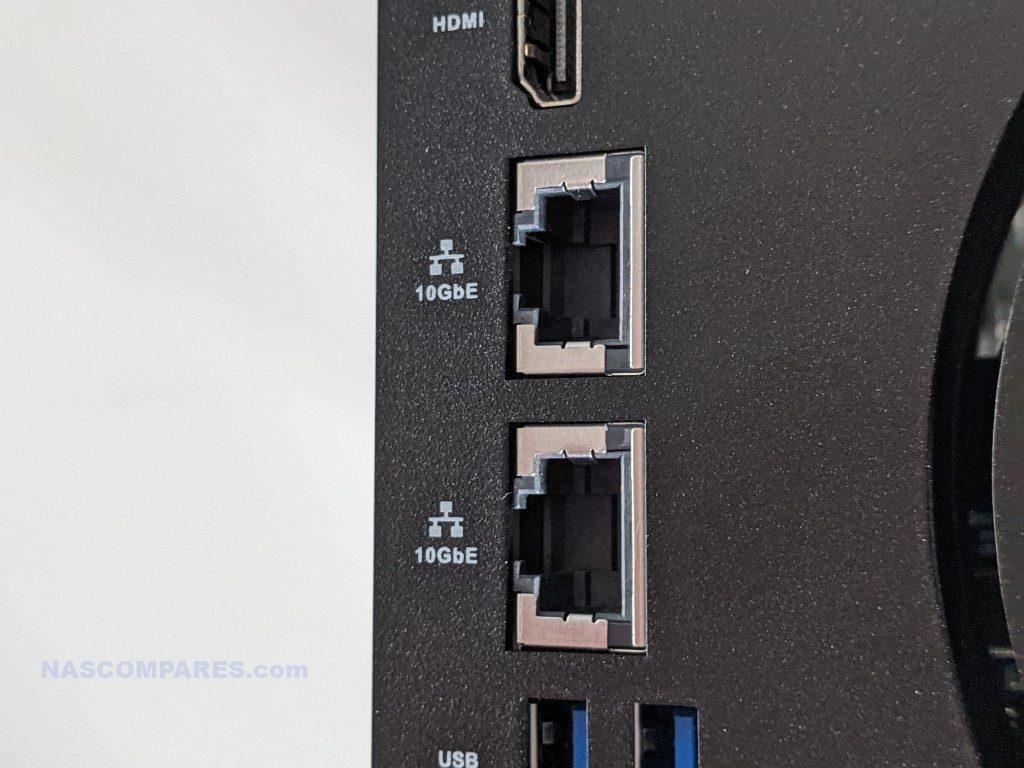


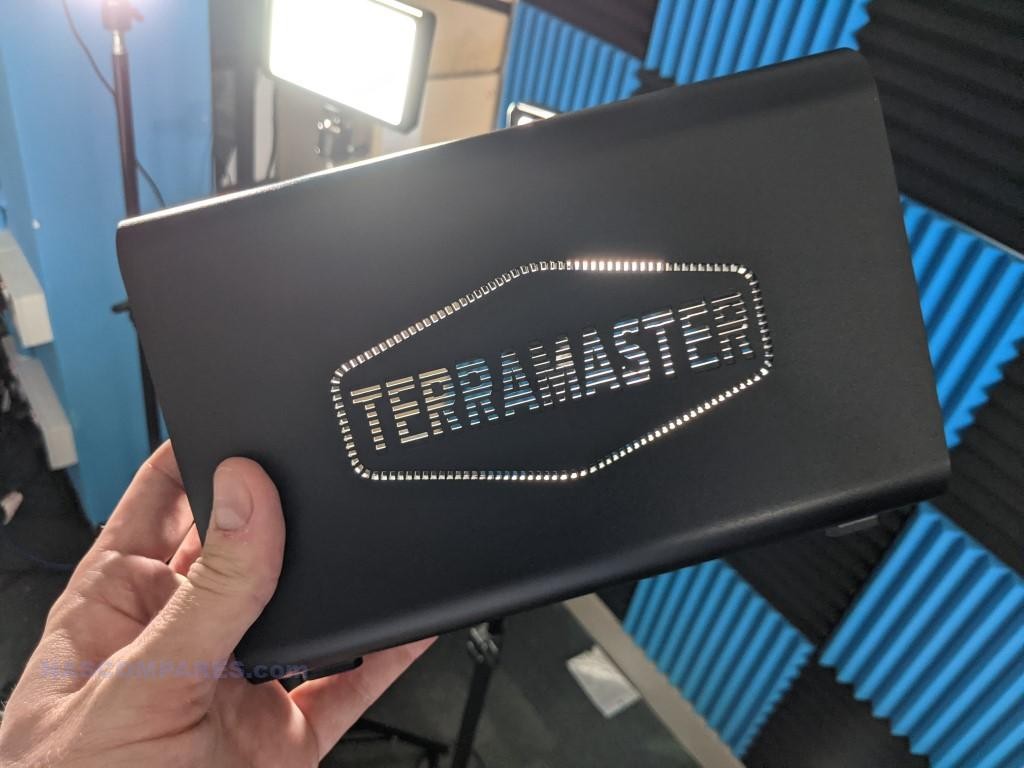
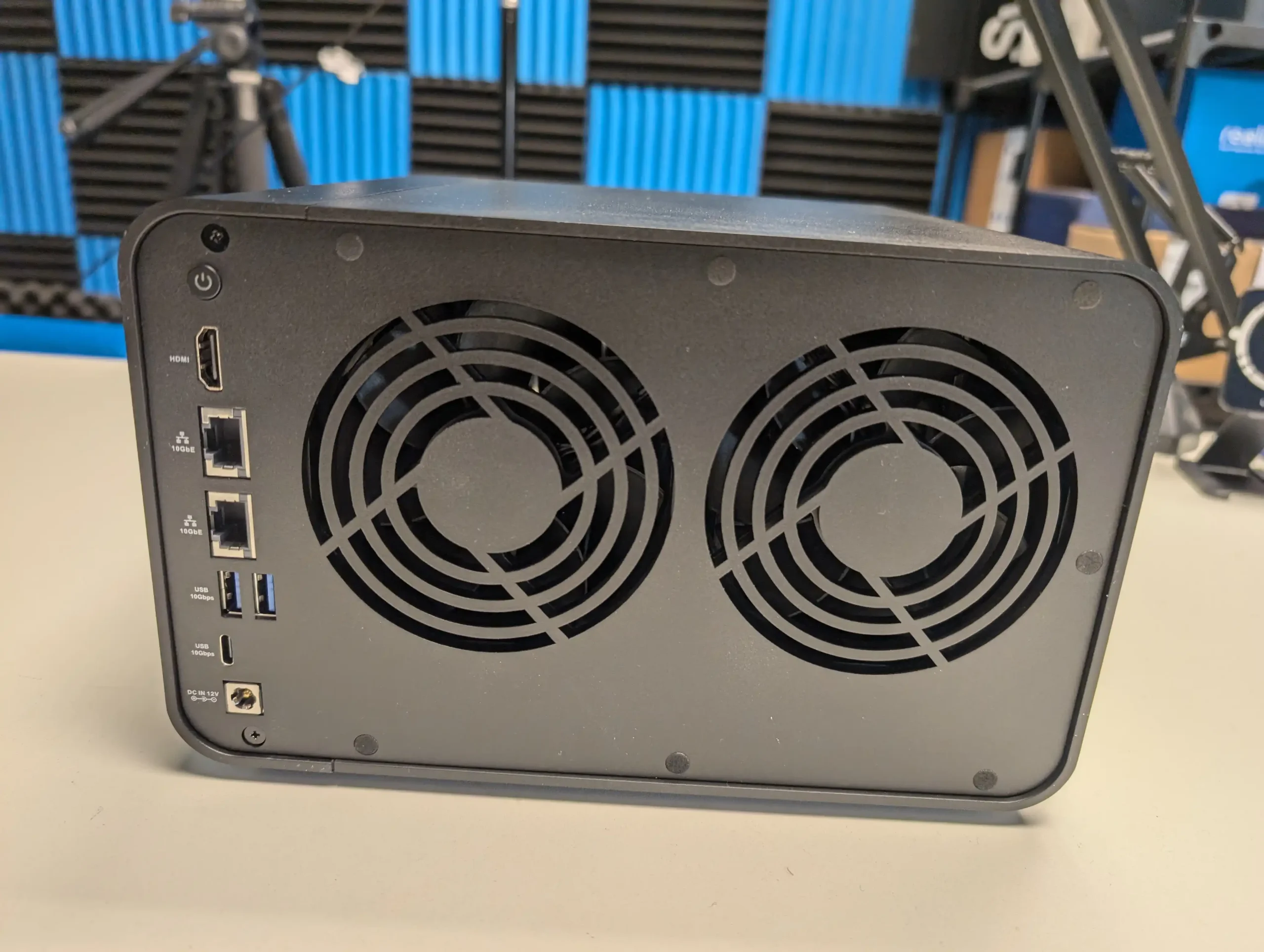
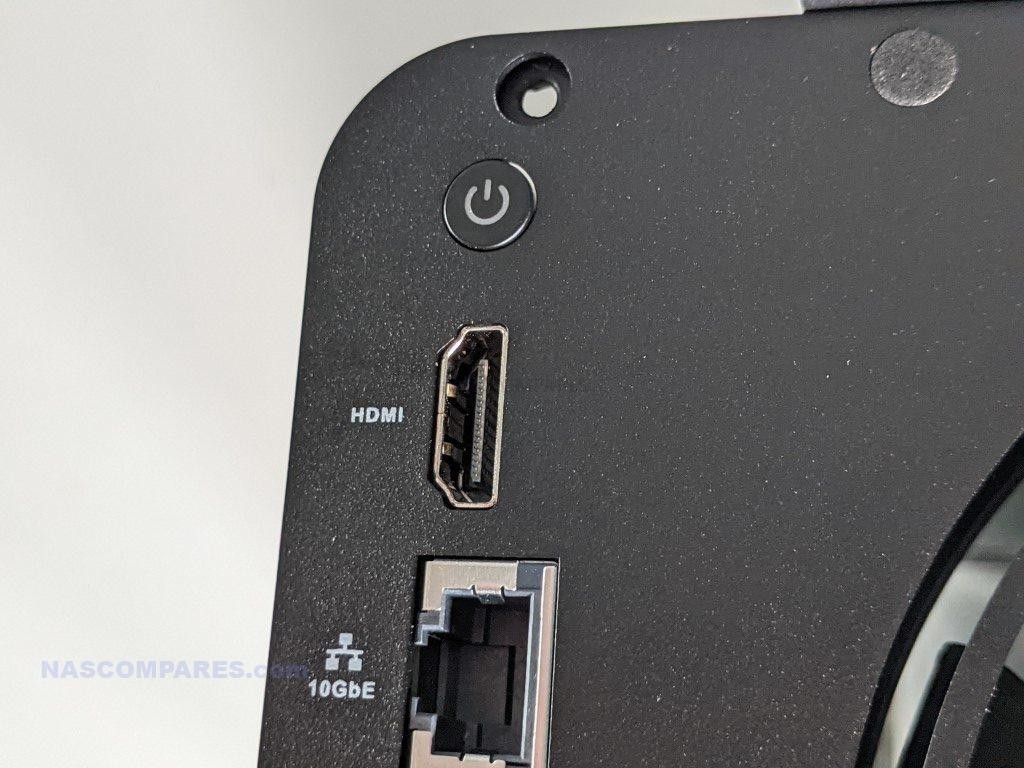
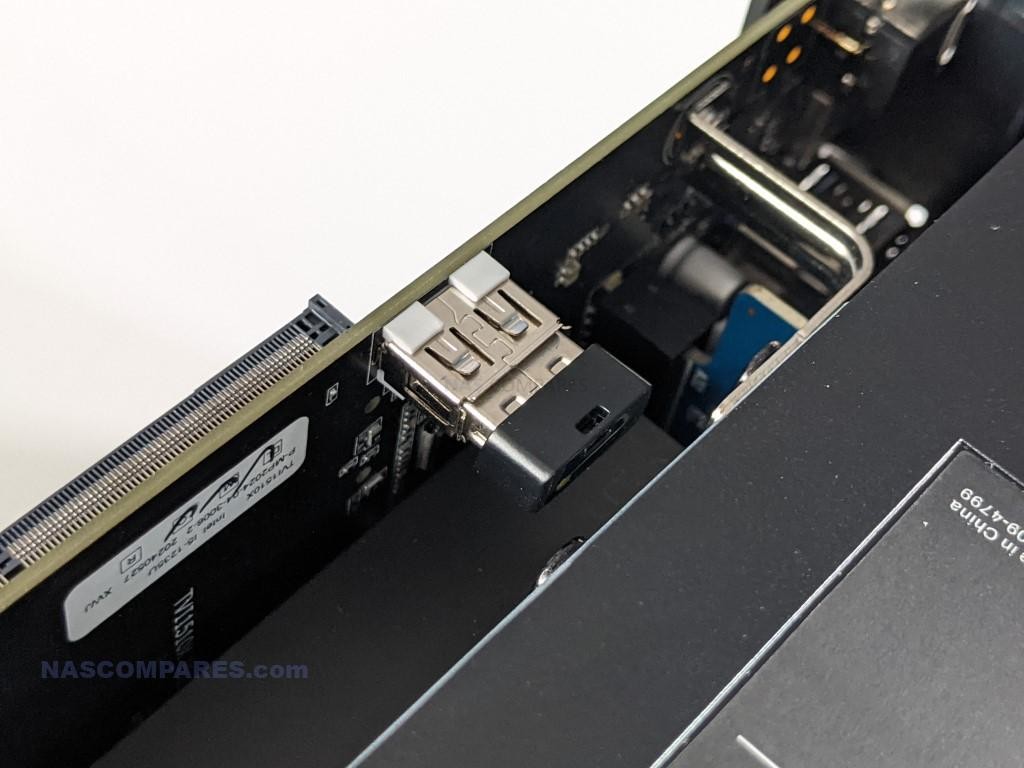
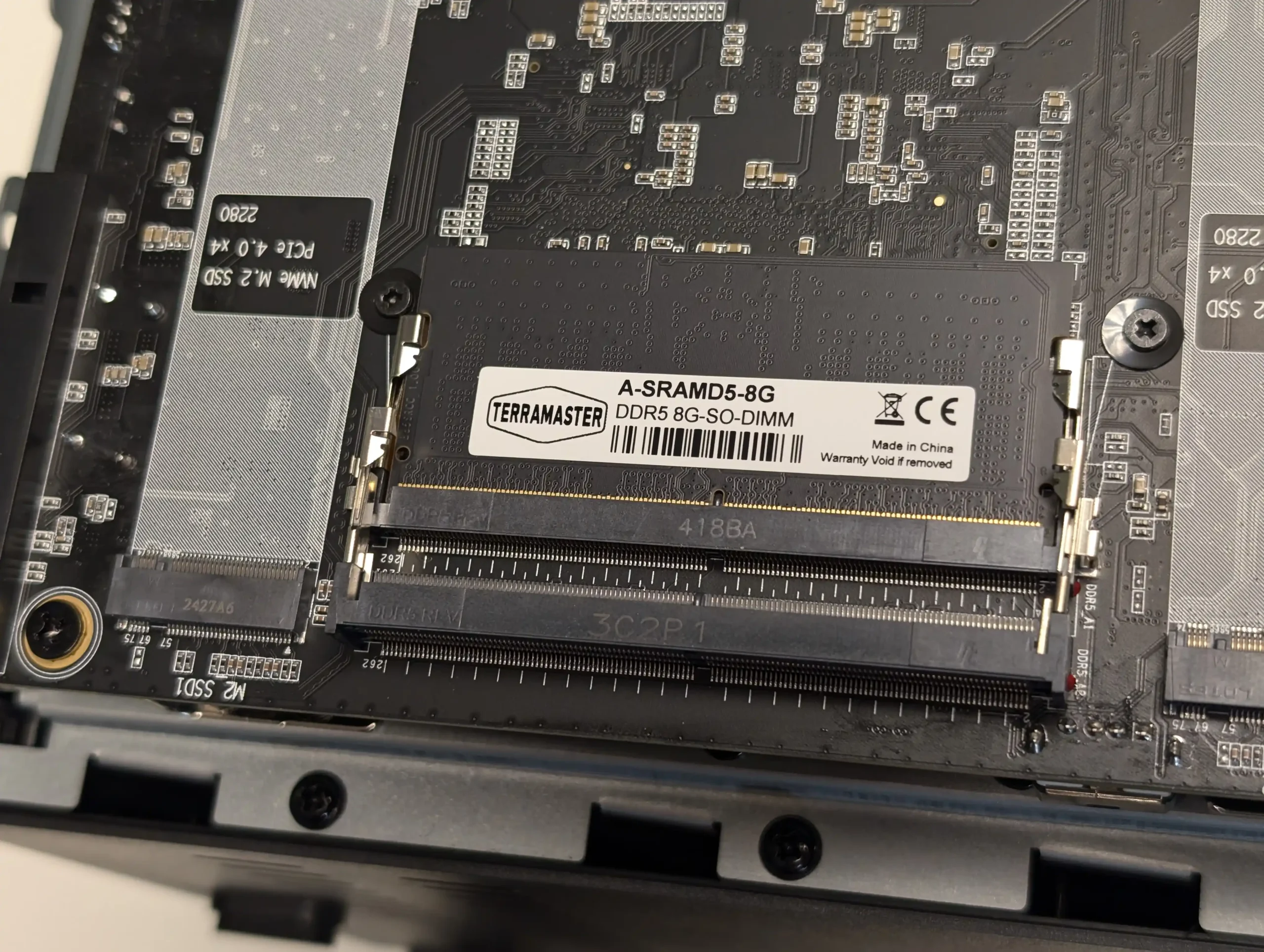
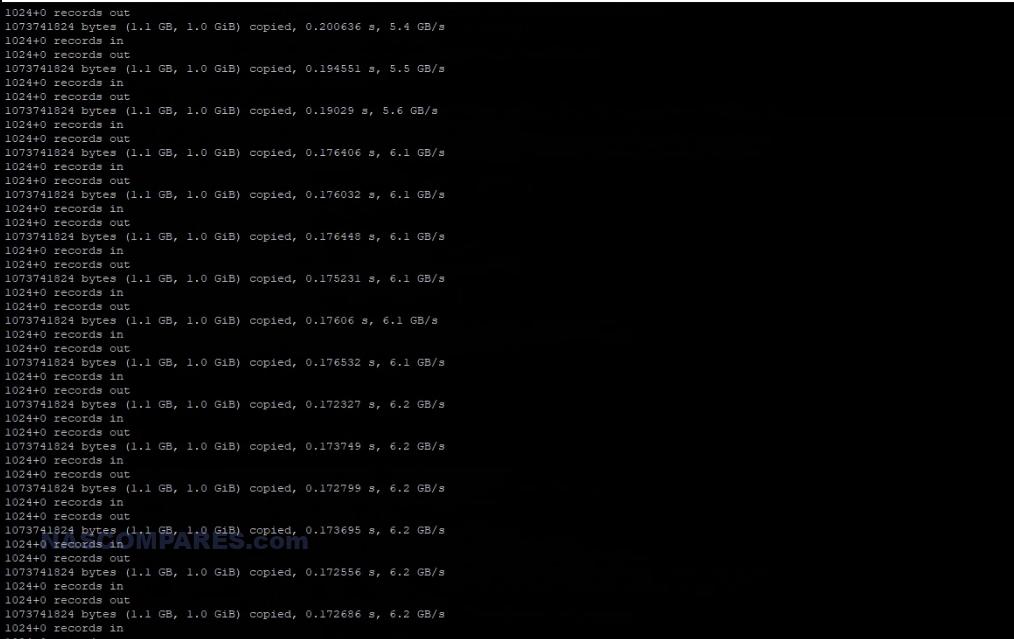

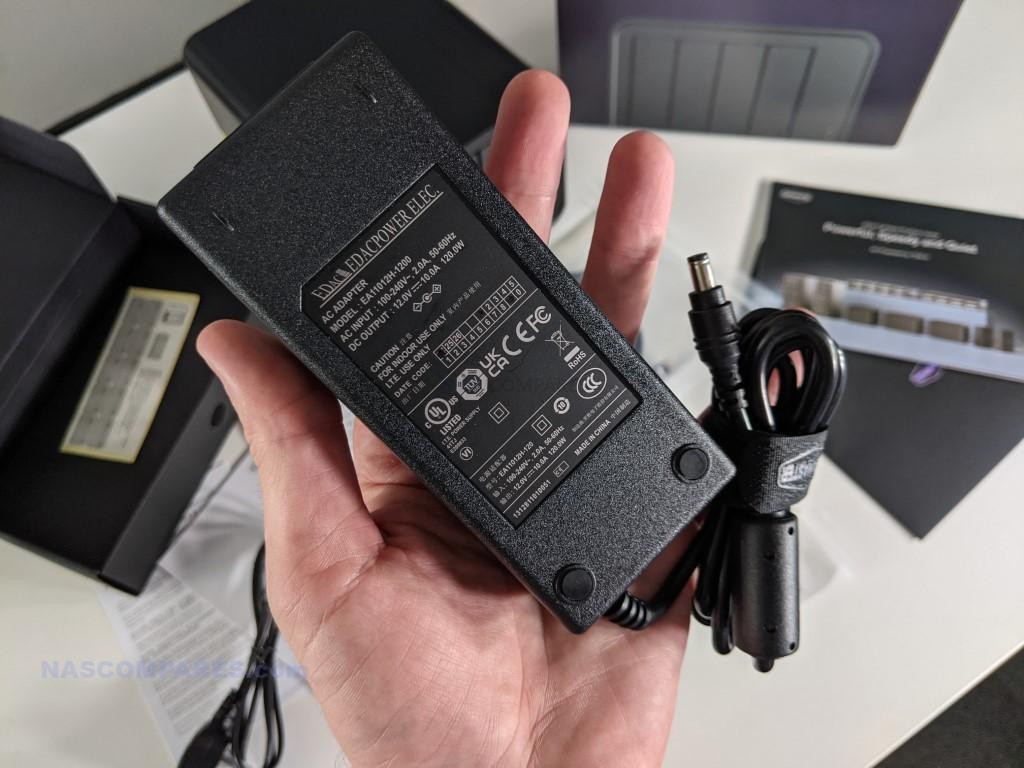
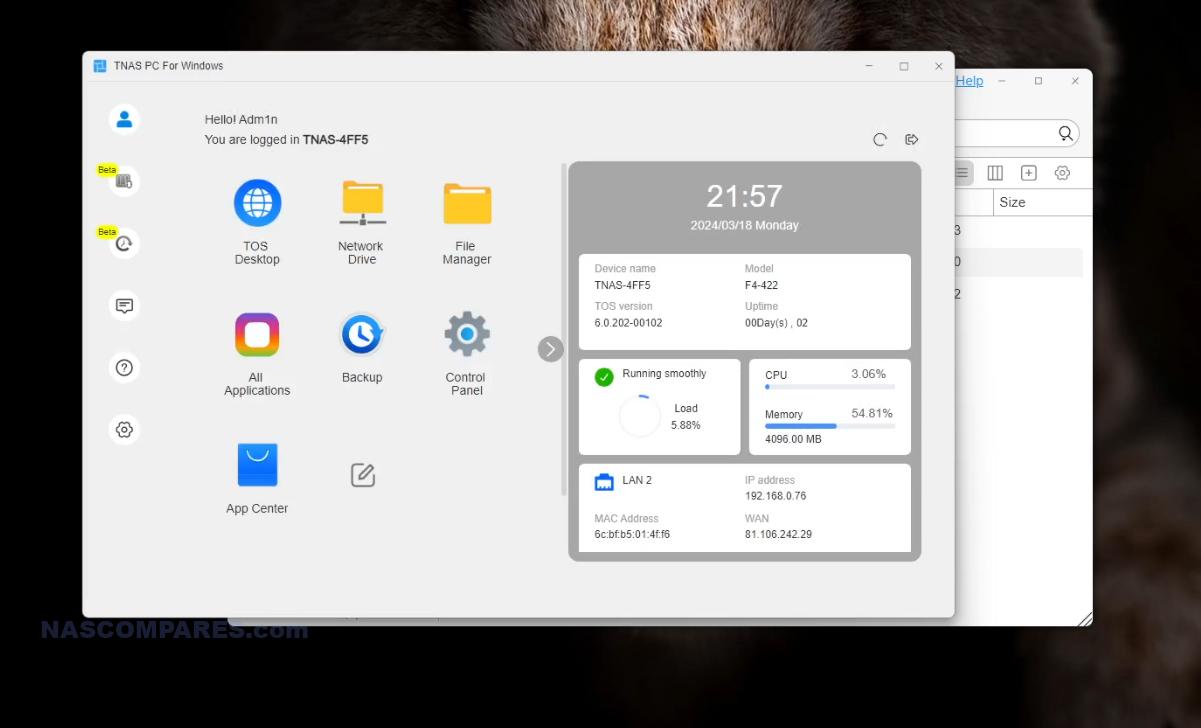
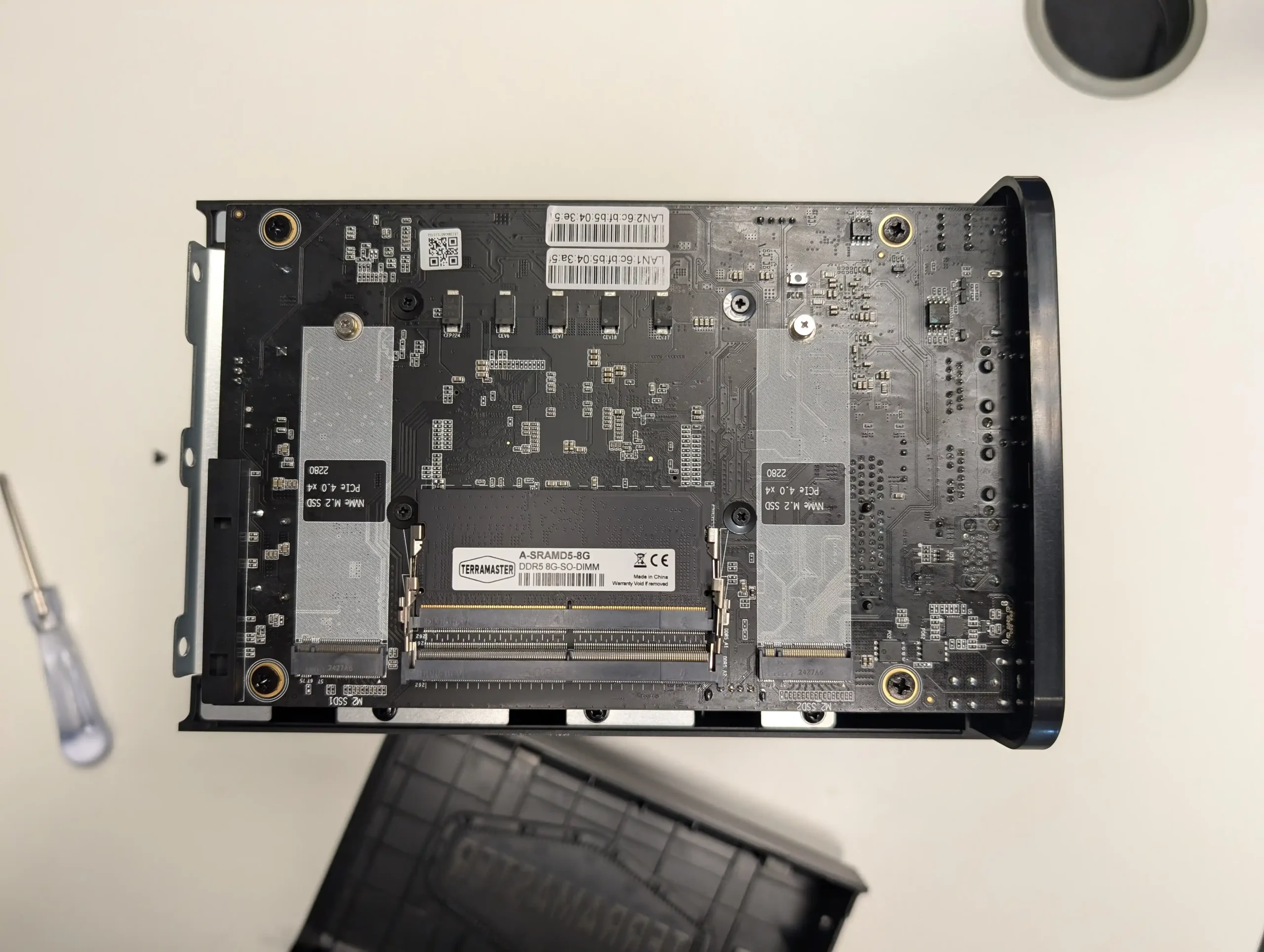
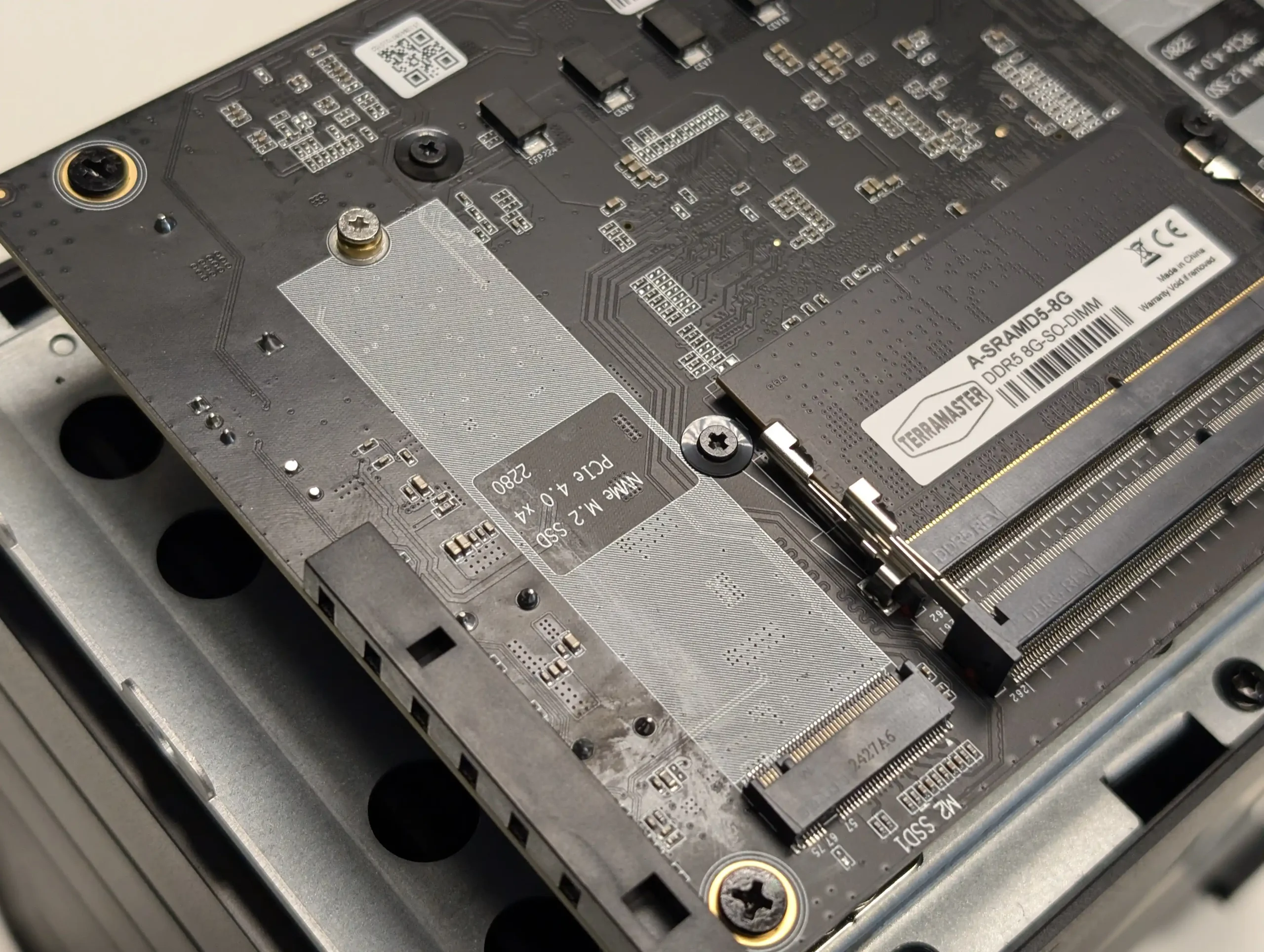
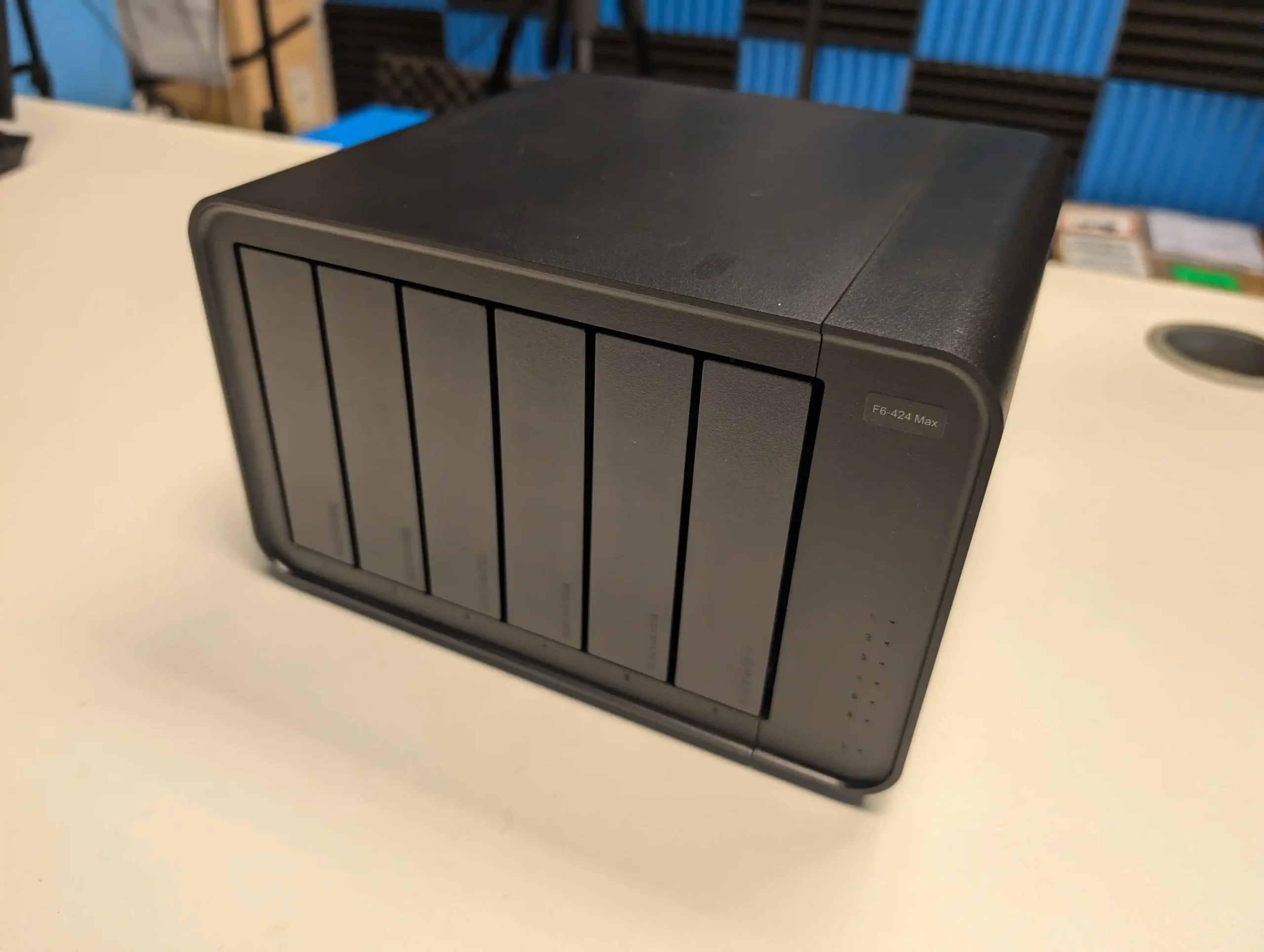

 SUBSCRIBE TO OUR NEWSLETTER
SUBSCRIBE TO OUR NEWSLETTER 

